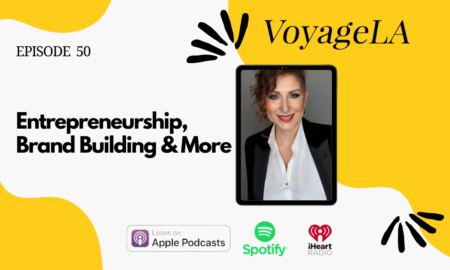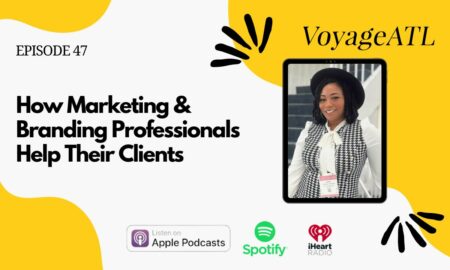

Today we’d like to introduce you to Lee Jones.
Lee, let’s start with your story. We’d love to hear how you got started and how the journey has been so far.
I actually got started in high school when I took photography as an art elective class. Back then, digital photography was still a novel idea. So, when I took the class, I had to purchase a Minolta X-370 SLR camera and a bunch of 35mm KODAK and FUJI film and learn how to develop pictures in a darkroom. I think this experience helped me focus on the importance of composition and exposure in creating a good photo because every bad or unusable photo was money wasted. Back then, you could not just delete a photo that you did not like within seconds of shooting it. You had to develop the film to see what you had.
After high school, I stopped shooting and decided to pursue other interests. Photography and the power of images still held my attention as I frequented museums that featured photographs, and I was briefly an art history major college. A few years down the road into the late ’90’s I got hooked again on photography and shot with two different film formats, 35mm and APS. Both formats still required darkroom development or taking the film to a store that processed the film by machine. After a while, I became disillusioned with photography, mainly because I saw it as a costly hobby at the time.
After moving to Atlanta, I still frequented museums that featured photographs or ones that had a special exhibition featuring a famous photographer. Although I had stopped shooting I was still enchanted by the world of photography. By the 2000s, digital SLR photography was starting to replace 35mm film photography. I was blown away at some of the advancements made in the digital photography world, so I picked up a camera once again and started shooting. At first, I had to figure out how to merge the techniques I learned shooting with a 35mm SLR camera with a digital SLR camera. I had to shoot a lot of images, almost always for free, to learn how to produce the images I wanted from the digital format. Along the way, I discovered how much more creative I can be with my shots because I was free of the burden of having to develop film and I could instantly see the results of what I shot. Essentially, it felt like the difference between riding the bus and driving your own car. I could go in directions digitally that I wanted to go rather than be limited by how far a camera and film could only go. It was like my passion was unleashed.
I established Lee P Jones Photography (formerly BAM Productions) in 2011 after publishing a book of photos that in essence served as a collection of my first digital photos that I felt were good enough for public display. After selling a few copies I was asked by some people how much I would charge for a shoot. At that time, I was mainly shooting for art. It never donned on me that I could still shoot and create my own sense of art for clients. Since then, I have shot for many clients and have had my images published in a fashion textbook and used by corporations and businesses in their advertisements. I’ve also published two more books and a magazine. I continue to approach each shoot with the idea of producing art rather than just a picture.
We’re always bombarded by how great it is to pursue your passion, etc. – but we’ve spoken with enough people to know that it’s not always easy. Overall, would you say things have been easy for you?
Perhaps the most challenging aspect of my work is seeking perfection in every image. When it comes to my photography, I demand perfection, or as close to it as I can get. A lot of times, that means I question whether I used the right lighting or the right lens or the correct angle or the right equipment, or even if an image is good enough for the client and myself. This can be a debilitating way to produce photos because every photographer knows that imperfections and mistakes are part of the deal when you pick up a camera. I may take 100 photographs of a subject and only come away with one, two, or three images that I feel are worthy of editing and delivering to the client. Another more recent challenge is having clients take my work seriously. Many people think what I do is easy and they could do just as well with a camera phone or a popular point-and-shoot camera. As a consequence, some people think I should shoot them or their event at little – or no – charge. But I have never had a client come back and say that they could have done just as well with a point-and-shoot or their camera phone after they see the photos I deliver.
So, as you know, we’re impressed with Lee P Jones Photography – tell our readers more, for example, what you’re most proud of and what sets you apart from others.
I like to say that Lee P Jones Photography is like a good insurance policy – I offer full coverage. I shoot products, events, portraits of individuals and families, weddings, and interiors of homes. But I am known for my portraits and candid shots. I have found that the best photographs occur when the subject doesn’t realize I am shooting. The best poses are often those in which people are authentically themselves – like when they are laughing or talking to someone or not paying attention to the camera. One of my tried and true techniques to reach a subject’s authentic self is to make them laugh. Not the kind of laugh that you see in print ads or TV commercials, but a genuine belly laugh. Everyone’s laugh is so unique that it can’t be “posed.” The best images I have are those in which the client is laughing. Joy makes for a great photo.
So, what’s next? Any big plans?
I want to take my business to the next level and continue to produce even better images. When I look back at the images that I took back in the ’90s and the early 2000s, I see how much better my work is today. I want to continue to see that progression in my work year over year. I also want to do more artistic photography. I would love to see my work hanging in someone’s home or business or even in an exhibit. In addition, I want to keep up with the latest software and camera improvements. Digital SLR’s are improving every year so if I want to produce the best images I have to use the best equipment that will get me there. Ultimately, I want my own studio (which is coming) and to offer medium format photography. My dream camera is a PhaseOne medium format camera that costs $50,000-plus. I can’t wait to get my hands on it.
Contact Info:
- Website: https://www.leepjonesphotography.com
- Phone: 678-439-7202
- Email: candidprofile@gmail.com
- Instagram: leepjonesphotography
- Facebook: Lee Jones
- Twitter: leepjones









Getting in touch: VoyageATL is built on recommendations from the community; it’s how we uncover hidden gems, so if you know someone who deserves recognition please let us know here.



















